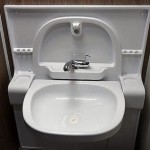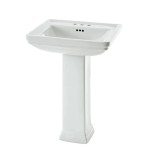Undercounter Bathroom Sinks: A Guide to Style and Functionality
Undercounter bathroom sinks, also known as vessel sinks, have become a popular choice for modern bathrooms due to their sleek aesthetic and versatile design. These sinks sit directly on the countertop, allowing for a seamless and minimalist look. Unlike traditional drop-in sinks, undercounter sinks require a specific installation process and consideration of various factors to ensure a successful and functional setup.
This article will delve into the world of undercounter bathroom sinks, providing insights into their advantages, installation process, and key considerations for choosing the right sink for your bathroom.
Advantages of Undercounter Sinks
Undercounter sinks offer several advantages that make them a desirable choice for contemporary bathrooms:
- Sleek and Modern Aesthetic: The clean lines and seamless integration with the countertop create a minimalist and sophisticated look. The absence of a rim or frame around the sink contributes to a modern and streamlined design.
- Easy to Clean: The absence of a rim or frame eliminates crevices and nooks where dirt and grime can accumulate, making cleaning easier. The smooth surface allows for quick and effortless wiping.
- Versatile Design Options: Undercounter sinks come in a variety of materials, shapes, sizes, and finishes, offering ample options for customizing your bathroom design.
- Enhanced Countertop Space: By sitting flush with the countertop, undercounter sinks do not take up any valuable surface area, maximizing available space for other bathroom necessities.
Installation Process
While undercounter sinks offer numerous advantages, they also require a more complex installation process than traditional drop-in sinks. Here is a general overview of the steps involved:
- Prepare the Countertop: The countertop needs to have a cutout that precisely matches the dimensions of the undercounter sink. This requires precise measurements and careful cutting to ensure a snug fit.
- Secure the Sink: Most undercounter sinks are secured to the countertop using a specialized mounting system, often involving clips, brackets, or adhesives. This ensures stability and prevents the sink from shifting or moving.
- Connect Plumbing: The drain and supply lines for the faucet need to be connected to the sink and routed beneath the countertop. This step requires plumbing expertise and careful attention to ensure watertight connections.
- Caulking and Sealing: The gap between the sink and the countertop needs to be sealed with silicone caulk to prevent water from seeping into the countertop. This step is crucial for preventing moisture damage and ensuring a watertight installation.
Key Considerations
Choosing the right undercounter sink for your bathroom requires careful consideration of several factors:
1. Material
Undercounter sinks are available in a wide range of materials, each with its own advantages and disadvantages:
- Ceramic: Durable, affordable, and available in various colors and finishes.
- Porcelain: Known for its smooth, non-porous surface, making it easy to clean and resistant to stains.
- Stainless Steel: Highly durable and resistant to scratches and stains, it is a popular choice for modern bathrooms.
- Glass: Adds a touch of elegance and sophistication but requires careful handling and maintenance.
- Stone: Natural stone, such as granite or marble, offers unique patterns and textures but can be more expensive and require special care.
2. Size and Shape
The size and shape of the sink should be chosen based on the available space and your personal preferences. Consider the depth, width, and overall footprint of the sink to ensure it fits comfortably within the countertop cutout.
3. Faucet Style and Placement
The faucet should complement the style of the sink and be compatible with the undercounter installation. Consider the faucet’s height, reach, and spout design to ensure a comfortable and functional experience. The faucet placement should also be carefully planned to ensure adequate clearance and access.
4. Countertop Material
The countertop material should be compatible with the sink’s installation and chosen material. Some countertop materials, such as laminate or engineered stone, may require special considerations during the installation process.
5. Installation Expertise
Installing an undercounter sink requires specialized skills and knowledge. It is highly recommended to consult with a qualified plumber or contractor to ensure a professional and watertight installation.
By carefully considering these factors, you can select the perfect undercounter bathroom sink that meets your needs and complements your bathroom design.

Undermount Bathroom Sink Buyer S Guide The Family Handyman

Undermount Bathroom Sinks

What S An Undermount Sink 2024 Guide To Sinks With Examples Badeloft

Horow 19 11 16 In Oval Porcelain Ceramic Undermount Bathroom Sink White With Overflow Drain Hr R5040d The Home Depot

Scarabeo 5135 By Nameek S Teorema 2 Undermount Bathroom Sink White Ceramic Thebath

American Standard Studio Carre Square Undercounter Bathroom Sink With Less Faucet Deck In White 0426000 020 The Home Depot

K288295 By Kohler Verticyl 19 3 4 Rectangular Undermount Bathroom Sink Studio41

Undermount Bathroom Sink Design Ideas We Love Modern Vanity Wood

Miseno Mno1713bwh 20 X 16 Rectangular Undermount Build Com

Scarabeo 8090 By Nameek S Miky 18 Inch Rectangular Ceramic Undermount Sink Thebath







